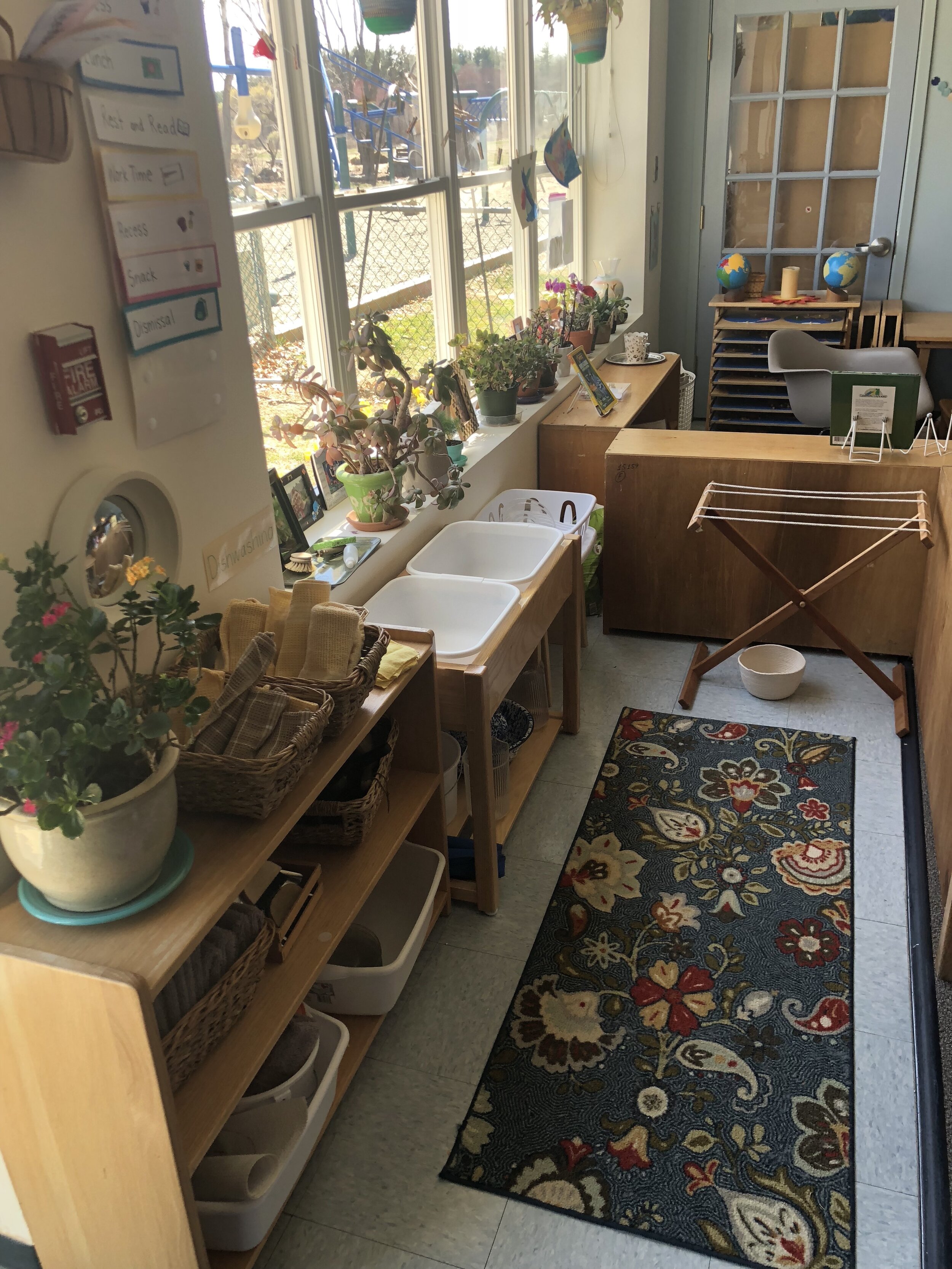What "Follow the Child" Really Means
Observing a child who loves large, gross motor movements - providing an opportunity to draw and erase on a chalk board is the perfect activity.
Montessorians have a lot of jargon that we throw around. It can sometimes be isolating - and elitist. I feel pretty strongly about using language that everyone can understand, speak about and relate to - especially when one of my main missions is to spread the word about how amazing a Montessori life can be. Last year, I even spoke with Jesse McCarthy of The Montessori Education podcast (listen to that here) about breaking down Montessori “lingo” and what all these highly used terms actually mean.
“Follow the child” is a phrase so many Montessori teachers use when describing how we go about working with and accessing the skills of a student. I can appreciate how this saying honors the child and kind of checks the adult at the door from driving their own agenda. But, I think it can be off putting to a lot of people. Many parents don’t want their teacher to “follow the child.” Their child needs encouragement - even a push, dare I say. Parents don’t always want us following their child and allowing their child to make their own decisions, their own choices, without guidance from their teachers. See what I did there? That is exactly the misinterpretation of what “follow the child” really means.
When Montessori educators say we follow the child with no explanation - it diminishes what the practice looks like.
We follow the child when we take time to get to know them.
We follow the child when each day, each week, each month, we sit and observe the child and see what their natural tendencies are (and are not).
We follow the child when we take the information our observations supply us with and use it to inform our practice.
We follow the child when we meet them where they are and support them through the following steps in their social, emotional and academic learning.
We follow the child when we watch them, listen to them and guide them in the right direction - may that be somewhere they don’t normally take themselves or offer them the little nudge children sometimes need.
We follow the child not to let them make all of their own choices, solve all of their own problems and dictate the structure of their day or the content of their education.
Having knowledge of young children and the Montessori philosophy - providing an area of the classroom dedicated to real work (dishwashing, table washing, cleaning, classroom jobs) makes a young child’s day at school purposeful.
Following doesn’t mean watching and doing nothing, it is meant to say that Montessori educators get actual, factual information through relationship building and observation and use it to guide the child’s natural path. This isn’t something a child can decide for themselves - which is why in many Montessori schools, teachers are called guides. I don’t love using that term either but with the right explanation and in the right context, it is truly a beautiful way to support a student’s education and describe the role of the teacher.
I’ve found that many people think of two extremes when asked to describe Montessori - one is that in Montessori school, children are allowed to do “anything” they want. The other is that the teachers dress all in black, stand on the perimeter of the classroom and children must do academic work all day long. Funny enough, neither of these situations sound like they are following any child (and don’t in any way accurately describe a Montessori classroom) - which is why we all need to do the work and understand what we really mean when we say this.
The use of relationship building, trust, support and knowledge of the young child is what I want people to know when I say, “follow the child.”
What other terms do Montessorians use that can be confusing to parents or other educators?

